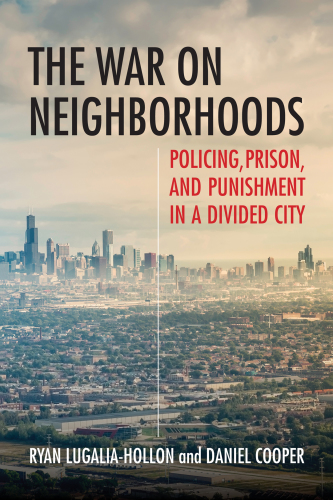
The War on Neighborhoods
Policing, Prison, and Punishment in a Divided City
کتاب های مرتبط
- اطلاعات
- نقد و بررسی
- دیدگاه کاربران
نقد و بررسی

February 15, 2018
A research-heavy, advocacy-grounded study of urban blight and incarceration, in which the authors "argue that efforts to end mass incarceration must go beyond reforming legislation or police practices."San Antonio-based youth-development director Lugalia-Hollon and Cooper (Co-Director, Institute on Social Exclusion/Adler Univ.) focus on Austin, one of Chicago's most economically depressed, high-crime neighborhoods. Throughout the book, the authors use the existence of the Eisenhower Expressway, which runs through the city into the suburbs, as a touchstone for inequality. Though the expressway exits are separated by only a few miles, what drivers find depending on the exit varies dramatically. The exit to Austin leads to shuttered businesses, inadequately funded schools, deteriorated housing, easily located drug dealers, a huge percentage of families below the poverty line, a brutal police presence, and alarming incarceration rates for African-American males. One more exit west leads to the Chicago suburb of Oak Park, a thriving, pleasant community populated by a low contingent of minority residents. Lugalia-Hollon and Cooper recognize that individual responsibility accounts for at least some of the massive economic and opportunity gaps, especially with regard to the need for more involvement by parents in community reform efforts. Mostly, however, they blame an uncaring, racially biased set of government agencies and businesses that actively avoid investment in Austin. The most blameworthy actors, it seems, are the police who arrest residents on the slimmest of pretexts, the prosecutors and judges who treat arrestees as cattle to be sent to prison, and the prison officials who encourage such behaviors to keep the cells filled. The authors offer possible solutions to most of the problems they document. Almost all of those solutions, however, depend upon major, unlikely readjustments of political priorities as well as massive investments in Austin by government, corporations, and not-for-profit foundations.At times bedeviled by academic jargon and repetition of obvious problems, but essentially a worthy plea for change.
COPYRIGHT(2018) Kirkus Reviews, ALL RIGHTS RESERVED.

April 1, 2018
Researchers Lugalia-Hollon and Cooper take the work of civil-rights lawyer and legal scholar Michelle Alexander (The New Jim Crow, 2010) a step further by looking at how punitive policing and austerity measures have exacerbated (and often created) social breakdown in Chicago's Austin community. Tracking the social divide along the Eisenhower Expressway, the authors note the stark racial and economic divides between robust downtown areas flush with city resources and the African American Austin neighborhood, where living wage jobs are all but an urban legend and life expectancy is 30 years lower than in the bordering white suburb of Oak Park. Rather than blame black residents for crime and addiction, the authors denounce the crime of austerity measures and the addiction to punishment that ensures disparate outcomes by condemning individuals for their poverty, their race, their homelessness, their mental illness and their home address. Lugalia-Hollon and Cooper call for a domestic Marshall Plan to boost employment, health, and education, and urge policymakers to focus on removing problem situations, rather than problem people.(Reprinted with permission of Booklist, copyright 2018, American Library Association.)

























دیدگاه کاربران